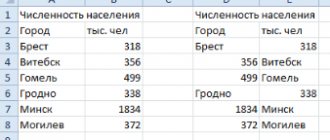Presentation for a 9th grade biology lesson “History of Genetics”
History of genetics
Author of the presentation
Biology teacher 1st category
Kuntsevich Oksana Vladimirovna
It goes badly for those who believe
that genetics can be neglected. Even the smartest person does not suspect how many defects he can carry in his chromosomes.
Wilhelm Schwebel
German scientist and publicist
of the 20th century
“...
a child arises from the fusion of female and male semen, it is produced in all parts of the body, therefore it carries information about all parts of the human body.
The seed of a man fights with the seed of a woman; whichever turns out to be stronger, that will be the sex of the child.” HIPPOCRATES
(about 460 BC, Kos island - 377 BC), ancient Greek doctor, naturalist, philosopher, reformer of ancient medicine.
MOM+DAD=
GENETICS
is the science of the most secret mysteries of nature - the laws of heredity and variability.
The year of birth of genetics as a science is 1900.
Major milestones in the development of genetics
- Exercise:
We fill out the table during the lesson.
date
The contribution of scientists to the development of genetics
Alcmaeon of Croton
Ancient Greek philosopher
End of the 4th - beginning of the 5th century BC.
… believed that, along with men, the female seed also exists with the male, and during fertilization, the seeds of the parents are mixed. The scientist explained the birth of children of one sex or another by the predominance of the father’s or mother’s seed.
...
admitted that the sex of the future organism is determined by the temperature of the uterus in which the fetus develops.
A male embryo is formed in a warm uterus, and a female embryo is formed in a cold uterus; that boys develop on the right side and girls on the left side of the uterus. EMPEDOCLUS
ancient Greek philosopher, doctor, statesman, priest
OK. 490 BC - ca. 430 BC
In a new way, he developed the doctrine of the origin of the seed and its role in the transmission of characteristics from parents. Homogeneous particles combine to form visible bodies. From his teaching it logically followed: the seed that generates living bodies contains “miniature” seeds representing all the parts and organs of the future organism.
ANAXOGOR
Ancient Greek philosopher, mathematician, astronomer
About 500 – 428 BC
...
believed that hereditary material is collected from all parts of the body, and thus all the organs of the body directly influence the characteristics of the offspring;
at the same time, healthy parts of the body supply healthy hereditary material, and unhealthy parts supply unhealthy. Thus, as a result, traits acquired during life must be inherited. This theory is called direct inheritance. HIPPOCRATES
around 460 BC
famous ancient Greek doctor
...
believed that hereditary material is formed from the blood and flows through the blood vessels.
Studying the development of a chicken embryo, I came to the conclusion that the characteristics of an organism arise during development. The material basis of the embryo was the “underdeveloped” female seed, and the driving force of development was the full-fledged male seed. ARISTOTLE
5th century BC
ancient Greek philosopher, student of Plato
Only G. Mendel, in his brilliant experiments on plant hybridization, managed to reveal the patterns of inheritance.
- “Experiments on Plant Hybrids” was published
Gregor Johann Mendel
1822-1884
Austrian biologist and botanist, father of genetics, discoverer.
created scientific principles for the description and study of hybrids and their offspring;
developed and applied an algebraic system of symbols and notation of features; formulated the basic laws of inheritance of traits over a series of generations, allowing predictions to be made; expressed the idea of the existence of hereditary inclinations (later they began to call them genes)
Gregor Johann Mendel
1822-1884
Austrian biologist and botanist, father of genetics, discoverer.
Sarge Augustin
(1763-1851)
French plant grower.
He noticed a redistribution of various contrasting characteristics in the offspring and thus anticipated the concept of combinative variability.
Sarget was the first to introduce the concept of contrasting or alternative (mutually exclusive) characteristics. He constructed series of contrasting pairs of parental characters for some plant species.
1900 year of birth of the science
GENETICS
Rediscovered and confirmed the laws of Gregor Mendel in 1900.
In 1901, he coined the term "mutation" to describe sudden heritable changes.
Hugo De Vries
1848-1935
Dutch botanist, geneticist.
Thomas Hut Morgan (1866-1945)
American biologist, founder of genetics, Nobel Prize laureate in genetics in 1933.
1920-1940
Chromosomal theory of heredity.
American geneticist Alfred Sturtevant (1891-1980), an outstanding student of Thomas Morgan, developed a method for mapping genes on chromosomes.
Hermann Joseph Möller (1890-1967) American geneticist, Nobel Prize laureate 1946, student of T. Morgan, known in the field of the mutagenic action of X-rays.
He formulated the law of homological series in hereditary variability at a scientific congress, and in 1926 he established the centers of origin of cultivated plants.
1922 - “the law of homological series” - about the genetic proximity of related groups of plants
1926 – “Centers of origin and diversity of cultivated plants”
Vavilov Nikolay Ivanovich
(1887 – 1943)
Russian and Soviet scientist, botanist-breeder, organizer and first director of the Institute of Genetics of the USSR Academy of Sciences,
Discoveries in the field of genetics:
Georgy Adamovich Nadson (1867-1939) Russian Soviet botanist, microbiologist, geneticist
and Georgy Semenovich Filippov (1900-1934) in 1925
discovered radiation mutagenesis and showed that it can be caused artificially by X-rays.
Discoveries in the field of genetics:
Chetverikov Sergey Sergeevich (1880-1959) - an outstanding domestic geneticist, entomologist.
In 1926, he formulated the basic principles of population genetics, which laid the foundations for the synthesis of genetics and evolutionary teaching.
Discoveries in the field of genetics:
Serebrovsky Alexander Sergeevich (1892-1948) - an outstanding domestic geneticist
In 1928 he showed that in the body there are always fewer genes than traits, he discovered the divisibility of genes and their complex structure.
Discoveries in the field of genetics:
Sakharov Vladimir Vladimirovich (1902-1969) - an outstanding domestic geneticist
Lobashev Mikhail
Efimovich (1907-1971) Soviet geneticist and physiologist
In 1932-1937, chemical mutagenesis was discovered, and substances that cause mutations were called mutagens.
Discoveries in the field of genetics:
Timofeev-Resovsky Nikolai Vladimirovich (1900-1981) is an outstanding domestic geneticist.
He proposed the terms gene expressivity and gene penetrance.
The current stage of development of genetics:
1962
- English physicist Francis Crick and American biophysicist Dewey James Watson discover the structure of DNA as a unit of heredity.
1967
- American biochemists R. Holy, H. Corans deciphered the genetic code
1990-2000
- The genomes of prokaryotes and eukaryotes were deciphered.
Transgenic organisms with altered genetic code have been created. 1997 –
Dolly the sheep was cloned,
1999 –
a mouse and a cow were cloned.
2000
– the human genome was read.
After 1900, research in the field of genetics expanded widely, and many important discoveries were made that laid the foundation for the further development of science.



